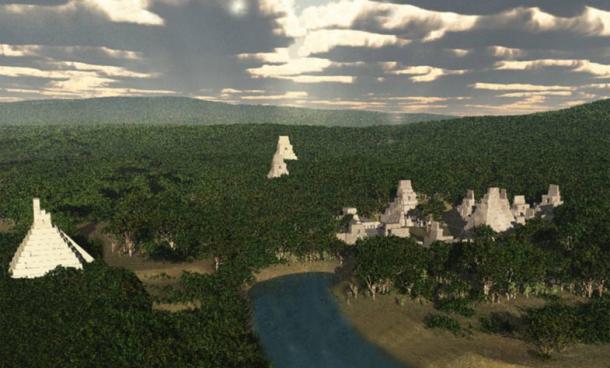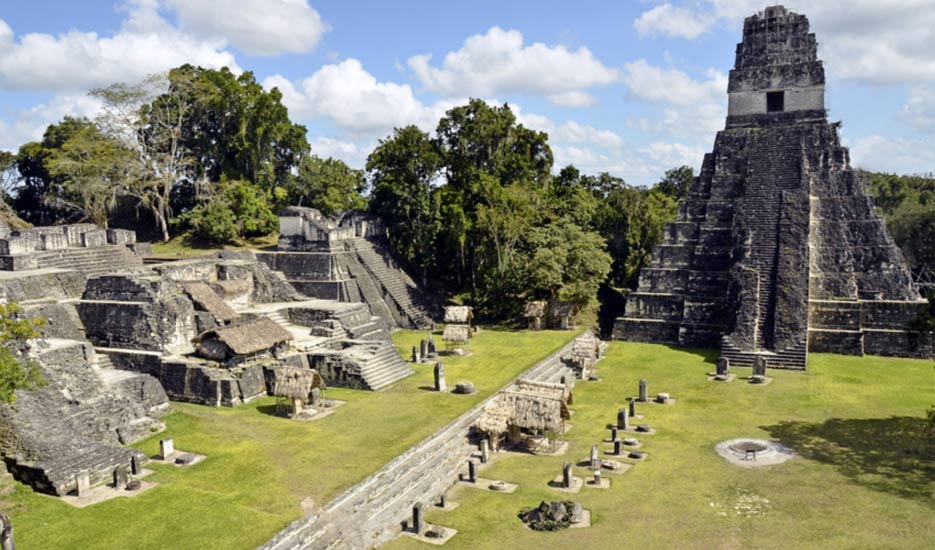New study says great Maya city of Tikal literally dried up
There are many mysteries in the history of this planet. One of them is why some civilizations, including the Maya of Central America, collapsed. If ancient people had no writing system or left no stone tablets or other enduring documents, it can be difficult to understand why highly evolved systems died. A new study sheds new light on what may have caused the decline of the great Maya city of Tikal in Guatemala.
Modern science is shedding light on why the great Maya city of Tikal in northern Guatemala ended in the 9 th century AD. In the past, scientists have speculated that war, unsustainable agriculture, overpopulation and/or drought ended many Mayan cities, including Tikal. It has been estimated that Tikal at its peak during the Classic period, 200 to 850 AD, had 100,000 to 200,000 residents. It was the largest Mayan city of the Classic period.

The Central Acropolis, south of the Great Plaza, holds residential and administrative structures (Wikimedia Commons)
Extending over 400 hectares and consisting of monumental architecture, including palaces and temples decorated with incredible mural paintings, ball-game courts, and ceremonial platforms, UNESCO says Tikal was home to an “extraordinary bygone civilization” and that the construction of the city bears witness to “highly sophisticated technical, intellectual and artistic achievements that developed from the arrival of the first settlers (800 B.C.) to the last stages of historic occupation around the year 900.”

Tikal consists of great monumental structures like this temple in the Grand Plaza (Wikimedia Commons)
Surrounding the urban area at Tikal was a wider zone covering over 1,200 hectares, which contained residential areas, water reservoirs, and sites for agriculture production that supported the city’s population.
So what catastrophe was so great that it could end a civilization that transformed the thick surrounding jungle into a great city with a rich culture, architecture and supporting farms, orchards, villages and towns?
A new study says drought possibly intensified by deforestation and paving of Tikal and the surrounding area resulted in the city’s downfall. The study’s authors, David Lentz of the University of Cincinnati and others, conclude: “the construction of extensive pavements combined with forest clearance likely exacerbated the effect of the drying trend, so by the mid-9th century there were inadequate supplies of water and food with little resilience left in the system to adapt to new conditions.”

Birds eye rendering showing an ancient reservoir at Tikal. Credit: Matt Zambelli and Tim Murtha
Popular-Archaeology.com says the report’s authors analyzed mineral deposits from regional caves, “which indicated episodes of persistent and unusually low rainfall during the mid-9th century, coinciding with the archaeological evidence of Tikal’s abandonment during that time period. Moreover, argue the researchers, the drought was likely enhanced by the inhabitants of Tikal itself, ‘as there is a growing body of evidence that indicates forest clearance, even partial forest clearance, will negatively impact the hydrologic cycle.’”
Tikal’s social structure collapsed when there wasn’t enough water to grow food to feed the population, Popular-Archaeology.com reports. The inhabitants abandoned the core of the city, ending construction and burning elite structures, “leaving only a tiny relict population huddled around the few water holes that did not dry up.”
Lentz and his colleagues surveyed the forest, studied satellite images, did excavations, coring and examinations of soil, plant and wood samples collected in and around Tikal from the Maya Late Classic period, from 600 to 850 AD. They studied “agro-forestry and agricultural land use practices of the Maya, as well as the evidence for environmental change, to build what they consider to be a likely scenario for the famous collapse of the great Tikal polity,” Popular-Archaeology.com writes.

The new study surveyed the forest surrounding Tikal. Image Source: Gudmund / Fotolia
“This latest study focused on examining evidence related to the agricultural and environmental factors. Their data and analysis showed that Tikal’s inhabitants practiced intensive forms of agriculture, including irrigation, terracing, and slash-and-burn cultivation, coupled with carefully controlled agro-forestry and water conservation techniques.”
Lentz et. al. speculate similar practices in the Mayan world, which was centered in the Yucatan Peninsula and what is now northern Central America, led to what is known as the Maya collapse around the end of the Classic period, around 800 AD.
Featured image: The central acropolis at Tikal. Image Source: Simon Danhauer / Fotolia
By Mark Miller

















